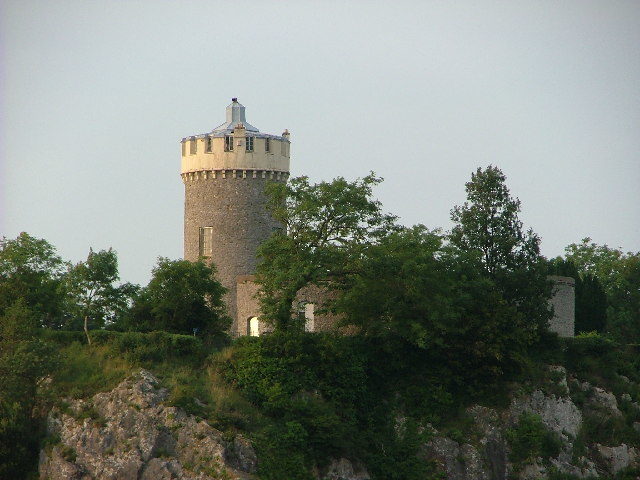Sitting high up on The Downs above the Avon Gorge, the Clifton Observatory is one of Bristol’s most iconic landmarks. It’s an iconic building and the entire site is a major tourist attraction.
The Observatory contains a passageway through a cliff that leads to St Vincent’s Cave (also known as Giant’s Cave), and it even has its own camera obscura.


The Clifton Observatory began life as a corn windmill back in 1766, built with permission by the Society of Merchant Venturers that also helped fund the construction of the Clifton Suspension Bridge. Later on, it was converted into a tobacco grinding facility and became known as The Snuff Mill. However, the mill was severely damaged in a fire on October 30, 1777, when the sails were left turning during high winds, which caused the equipment to burst into flames.


For the next 52 years, the place was deserted, until 1828, when an artist by the name of William West rented the old mill from the Merchants for 5 shillings (25p) a year and turned it into a studio. He is the man responsible for the creation of the Observatory and what the building is recognized for today.

Mr. West first installed a telescope at the top of the tower, which was replaced with a camera obscura in 1892. A 5 inch (13 cm) convex lens and sloping mirror were introduced that could project panoramic views of the of the iconic Clifton Suspension Bridge and the city of Bristol onto a white surface inside a darkened room.

The camera obscura was used by Mr. West, and students of the Bristol School of Artists to draw the Avon Gorge and Leigh Woods on the opposite side, a process he called “photogenic drawing”.
It is still functional and open to the public, and the paintings that originated from the images of the camera can be seen in Bristol City Museum and Art Gallery.


West also built the 2,000-foot tunnel that opens onto St Vincent’s Rocks on the cliff face and leads to St Vincent’s cave. It is 250 feet above the floor of the Avon Gorge, 90 feet below the cliff top, and was opened to the public in 1837. Excavations of the limestone cave and the findings of a Romano-British pottery revealed the place was a chapel in the year 305 A.D.


At the end of World War I, the Observatory was used for holding celebrations, and later, during World War II, as a shelter for the people of Clifton. In the 1900s, the building was leased to the Bristol Corporation for the relief of the poor, and after 1977, the Observatory went into private ownership, but the ownership of the camera obscura was retained by the Merchant Venturers.


The building was appointed as a grade II listed building by the English Heritage Trust, and in 2011, under threat of dereliction, it was placed on the Buildings at Risk Register. The owner at the time, John Michallat, made extensive renovations to the observatory, and after he completely restored it, he put it up for sale. It was bought in February of 2015 by Ian Johnson, a local Bristol-based entrepreneur born in Clifton.

Today, the Clifton Observatory is considered a national treasure, and an iconic tourist attraction that offers superb views of the Clifton Suspension Bridge and the city of Bristol, and tours to St Vincent’s Cave.
